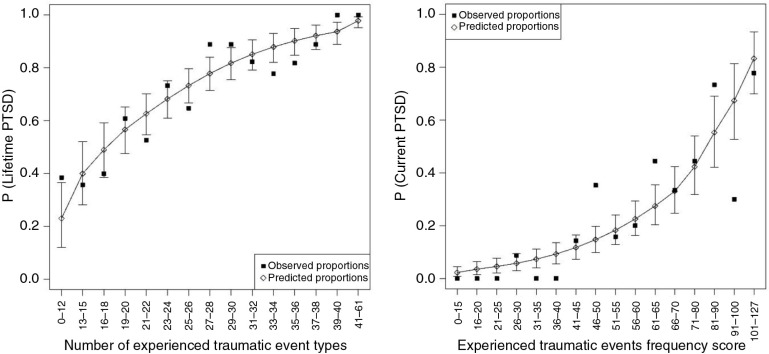Fig. 2.
Left panel: The probability of lifetime PTSD is best predicted by a trauma assessment which measures the number of different traumatic event types experienced. Depicted are the observed and predicted proportions of lifetime PTSD against the number of traumatic event types, with 95% bootstrapped confidence intervals of the prediction. Right panel: By contrast, the probability of current PTSD is best predicted by a trauma assessment which considers the frequency of the traumatic events experienced. Depicted are the observed and predicted proportions of current PTSD against the experienced traumatic events frequency score, with 95% bootstrapped confidence intervals of the prediction. For this graphical illustration, data on trauma exposure was aggregated in groups of ≥9 individuals per group in order to be able to calculate meaningful proportions.

